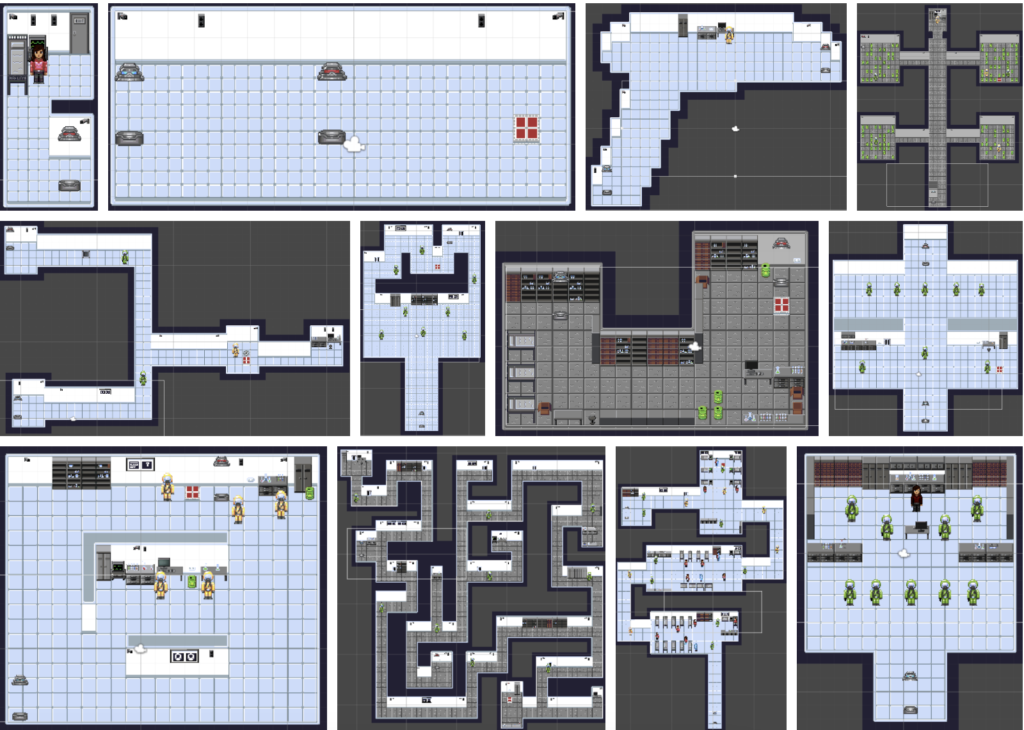Prototype
Gamedesign- and Programming
TOOLS
- Unity
- GraphicsGale
- University projects
- Teamsize of 2

Game mechanics
Time Freeze
The time freeze is our most fundamental game mechanic. When the player stops moving, everything else should also stop moving, because time freezes. We have realised this with a TimeFreezeManager. It is queried whether there is player input regarding our provided movement and if this is not the case, the time of the game is set to zero, otherwise to one.
Movement
The game character can be moved horizontally, vertically and diagonally using WASD or the arrow keys.
Shooting
The position of the mouse indicates the direction of the shot and a shot is fired with the left mouse button. A bullet prefab is created from the player’s position, which moves to the position of the mouse at the time of firing. The bullets move at the same speed as the player, as this allows for interesting leveling and dodging mechanics.
Switches and teleporters
The teleporter is essential to get from one test room (level) to the next in our game. This must usually first be activated by a switch hidden in the level. For the teleporters, we have created corresponding prefabs with animations for the associated sprites. There are three types of teleporters: The one that the player uses to arrive in the level, an inactive teleporter and an active one that is activated by pressing the switch. As soon as the collider of the character comes into contact with that of the active switch, a UI element appears, which allows the player to advance to the next level.
Dialogues and object interaction
In essence, there are two different types of dialogues: Those that are triggered by interaction with an object and those that appear to be triggered „automatically“. To be able to display a text, this must be assigned to the desired game object, whereupon a user-defined text can be entered, which is displayed in a UI element when the player interacts with the item using the E key.
Design

Since the story takes place in a laboratory building, four different floor tiles and two wall tiles were created in neutral blue and grey tones. In addition, we pixelated furniture such as shelves, cupboards and beds from different perspectives. To make the room a bit more realistic, we also designed smaller filler objects such as goggles, test tubes, etc.

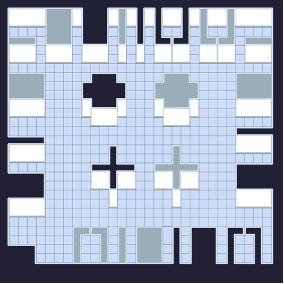
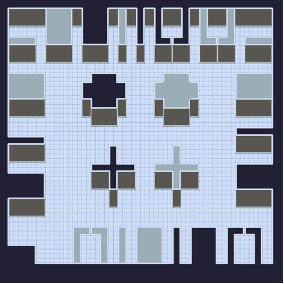


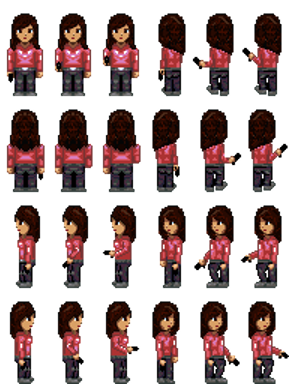
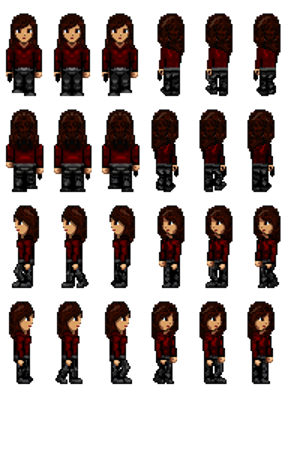
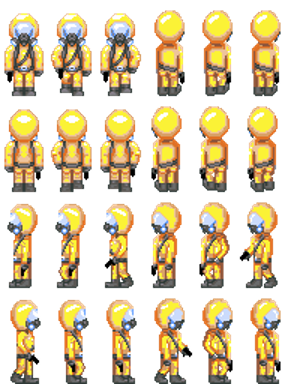
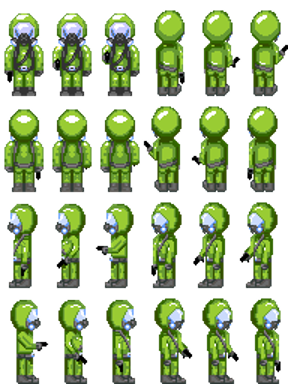
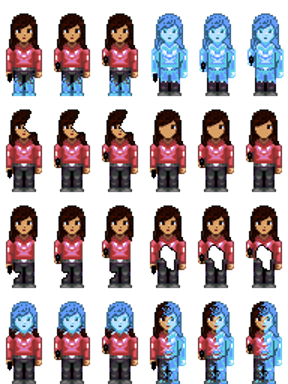
Animation
Level design
